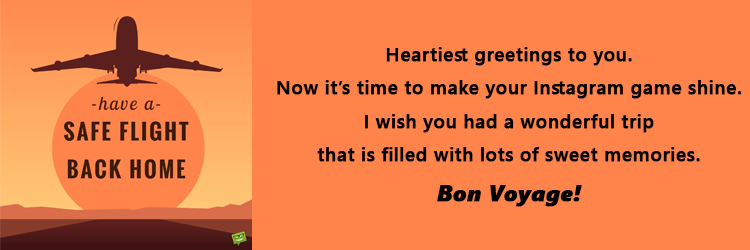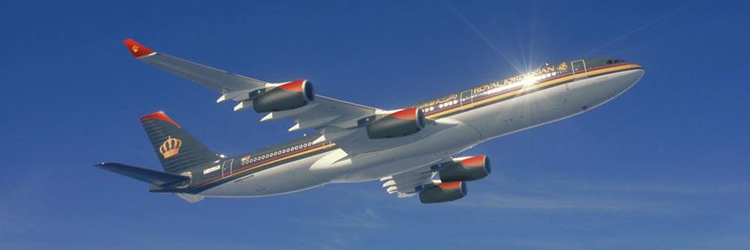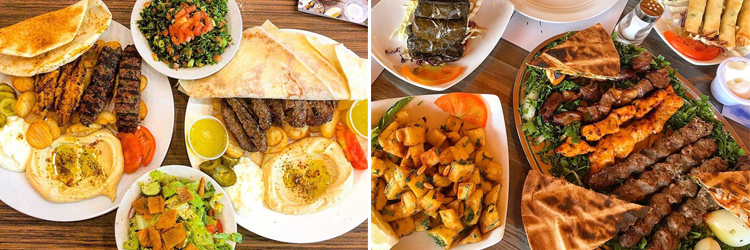End of Program
fahooooooooom
"Jordan Pass" You Drive 8 Days - 7 NightsTheme: History & Culture
The itinerary that was built for this program is a recommendation, yet it is an option. We do adjust and amend the Itinerary upon your request. We will do changes to make the itinerary fits your course of plan for your adventure trip.
Day 01: Queen Alia Airport - Amman
Upon arrive Queen Alia international airport, you will be met and assist by our representative who will be waiting for you with a sign under your names to complete all airport procedures, then guide you to your driver / guide to pick you up from the Airport to your hotel in Amman.
| You will be transferred from Queen Alia Airport to Amman | |
| Distance | Estimated time duration |
| 35 KM | 45 Minutes |
No excursions on this day
Room Type : Single/ Double/ Twin/ Triple – upon request
Meal Plan : HB (Breakfast & Dinner)
Website: http://www.olivetreeamman.com/
Day 02: Amman – Jerash – Ajloun – Amman
You will receive your car at the hotel at 9:00 AM and starting your tours to the north, see one of the Decapolis cities “Jerash”, as well explore Ajloun Castle.
| Self-drive from Amman to Jerash | ||
| Distance | Estimated Time Duration | Time for visit |
| 45 KM | 40 Minutes | 2-3 Hours |
| Self-drive from Jerash to Ajloun | ||
| Distance | Estimated Time Duration | Time for visit |
| 25 KM | 40 Minutes | 1 Hour |
| Self-drive from Ajloun to Amman | ||
| Distance | Estimated Time Duration | Time for visit |
| 70 KM | 1 Hour & 30 Minutes | ----- |
It's without doubt one of the most beautiful Roman cities preserved in the Near East, the city of 1000 pillars. After Petra, Jerash is the second largest tourist destination in Jordan. The ancient city of Jerash can proudly situate the beginning of its occupation by men to more than 6500 years. Conquered by General Pompey in the year 63 BC, it passed under Roman control and became one of the ten great Roman cities composing the Confederation of Decapolis. Our local guide will introduce you to his colonnades, temples, theaters, churches, cardo-maxims and other monuments.
Ajloun:
It's a 12th-century Muslim castle situated in the Northwest of Jordan. Located 75 km away from Amman, about an hour and a half drive.
It was named after a Christian monk who lived on the mountain in the Byzantine Period. The castle stands on the ruins of a monastery, traces of which were discovered during archaeological excavations. It is believed that the castle controlled traffic along the road connecting Damascus and Egypt.
Many areas of the castle can be explored, there is also a museum exhibition inside with many interesting artifacts from various time periods of the region. You can also admire the panoramic view over the Jordan Valley from the top of the castle. You can also see the Ajloun nature reserve, Mar Elias an archaeological site believed to be the birthplace of the prophet Elijah. Finally you can have a meal with a local family or even a homestay to truly immerse yourself in the culture.
Room Type : Single/ Double/ Twin/ Triple – upon request
Meal Plan : HB (Breakfast & Dinner)
Website: http://www.olivetreeamman.com/
Day 03: Amman – City Tour – Dead Sea
Start your day with a city tour of the capital of Jordan, then go to the Dead Sea.
| Self-drive from Amman to Dead Sea | ||
| Distance | Estimated Time Duration | Time for visit |
| 45 KM | 1 Hour | Free Day |
It's the capital and most populated city of Jordan. It is a blend of ancient and modern architecture that was originally built on seven hills over the citadel.
It is located on one of the tallest hills giving it a splendid view of the old city.
Amman is a fascinating city of contrast - a unique blend of old and new, ideally situated on a hilly area between the desert and the fertile Jordan valley.
You will start your tour from the city center - the oldest part of Amman which is crowned by the citadel with a charming panoramic view of the whole city. You can also see the ancient ruins of the Hercules’ temple which dates back to (161-120), the Byzantine church, the Omayyad palace and the fascinating archaeological museum - it includes an amazing collection of Jordan's antiquities.
At the foot of the Citadel there's is the Roman Theater built in the 2nd century, which is still used for cultural events till now.
Finally, go through Abdoun, the contemporary area that has some of the best modern architecture.
It has an extensive historical and spiritual legacy. Its surface and shores are 430.5 meters below sea level the Earth's lowest elevation on land.
Room Type : Single/ Double/ Twin/ Triple – upon request
Meal Plan : HB (Breakfast & Dinner)
Website : http://www.ihg.com/holidayinnresorts/hotels/us/en/dead-sea/ddljo/hoteldetail
Day 04: Dead Sea – Mount Nebo – Madaba – Kings Highway – Kerak – Petra
On this day you will start in the morning and toward to Petra along King's Highway Road, it is the world’s oldest continuously used commutation route. It used to link ancient Bashan, Giliad, and Ammon in the north with Moab, Edom, Paran, and Midian in the south. The Kings’ Highway is first mentioned in the bible by name in Genesis 20:17, when Moses led the Exodus through southern Jordan, also King’s Highway connected Syria with the Gulf of Aqaba by way of what is now Jordan.
On the way to Petra you will visit Madaba, Mount Nebo and explore Kerak Castle.
| Self-drive from Dead Sea to Mount Nebo | ||
| Distance | Estimated Time Duration | Time for visit |
| 40 KM | 45 Minute | 1 Hour |
| Self-drive from Mount Nebo to Madaba | ||
| Distance | Estimated Time Duration | Time for visit |
| 10 KM | 15 Minutes | 30 Minutes |
| Self-drive from Madaba to Kerak | ||
| Distance | Estimated time duration | Time for visit |
| 90 KM | 2 Hours & 30 Minutes | 1 Hour |
| Self-drive from Kerak to Petra | ||
| Distance | Estimated time duration | Time for visit |
| 180 KM | 3 Hours | ----- |
The first church in Mount Nebo was built at the end of the 4th century AD and marks its historical importance in the area.
From a platform in front of the church, you can see a bronze memorial of a snake on a cross that symbolizes the serpent raised by Moses in the desert, as well as the crucifixion of Jesus Christ.
Mount Nebo offers a fantastic view of the Dead Sea, the West Bank, Jericho, the Jordan River, and on a clear day Bethlehem and Jerusalem.
According to Christian and Islamic beliefs, Moses was buried somewhere in the mountain, although the exact place of burial is not specified.
Madaba:
It is now inhabited by Christians and Muslims a like, an example for religious tolerance between Christians & Muslims in Jordan.
In addition to this it is also known as the location of the "Madaba Map" at St. George Churches, which were built in the 6th century showing depiction of Jerusalem and parts of the Holy Land.
Kerak:
The town is built on a triangular plateau, with the castle at its narrow southern tip. The castle is some 220m long, 125m wide at the north end, and 40m wide at the southern end where a narrow valley deepened by a ditch separates it from the adjoining and much higher hill – once Saladin's favourite artillery position. Throughout the castle, dark and roughly-shaped crusader masonry is easy to discern from the finely-crafted blocks of lighter and softer limestone used in later Arab work.
Room Type : Single/ Double/ Twin/ Triple – upon request
Meal Plan : HB (Breakfast & Dinner)
Website : http://tetratreehotel.com/cms/
Day 05: Petra visit – Walking up to 10 KM
start point: visitor center
Endpoint: the Petra treasury
Petra – The Hidden Rock City:
The giant red mountains and vast mausoleums of a departed race have nothing in common with modern civilization, and ask nothing of it except to be appreciated at their true value - as one of the greatest wonders ever wrought by Nature and Man.
Although much has been written about Petra, nothing really prepares you for this amazing place. It has to be seen to be believed.
Petra the world wonder, a UNESCO World Heritage Site is without a doubt Jordan's most valuable treasure and greatest tourist attraction. It is a vast unique city, carved into the sheer rock face by the Nabataeans, an industrious Arab people who settled here more than 2000 years ago. Their presence turned it into an important junction for the silk, spice and other trade routes that linked China, India and southern Arabia with Egypt, Syria, Greece and Rome.
you will visit the unique "Rose-Red" city of Petra, built by the Arab Nabatean’s who hewed their monumental tombs, palaces, temples and treasury from the desert rock’s sandstone in its’ natural hues of rose and gold.
You will begin the trip on horseback for 700m till the entrance of the impressive narrow gorge (Siq) that leads marvelously to the magical moment. There you can glimpse the Treasury, continue to the street of facades, the Royal Tombs, the Cardo, Temples, Churches and Museums.
Room Type : Single/ Double/ Twin/ Triple – upon request
Meal Plan : HB (Breakfast & Dinner)
Website : http://tetratreehotel.com/cms/
Day 06: Petra – Little Petra – Wadi Rum (4x4 Jeep Ride)
In the morning go around the Little Petra, it’s close to Petra and you will find it after a 15 minute drive. Then go south to the Largest and most magnificent of Jordan’s landscape – Wadi Rum, you will discover the desert by the old Bedouin 4x4 SUV.
| Self-drive from Petra to Little Petra | ||
| Distance | Estimated Time Duration | Time for visit |
| 10 KM | 15 Minutes | 30 Minutes |
| Self-drive from Little Petra to Wadi Rum | ||
| Distance | Estimated Time Duration | Time for visit |
| 150 KM | 2 Hours & 30 Minutes | 2 Hours |
It is believed that Little Petra was an important suburb of Petra, the entry and exit point for the trade routes to the north and north-west. Here the caravans from the Negev, Gaza, Jerusalem, Egypt and the Mediterranean coast arrived, had a rest and engaged in trade. Like in Petra buildings had been carved into the sandstone, used as residences, storages and tombs along with water channels and cisterns. In one of the buildings you can find the remains of painted frescoes with birds, grapes and flowers, dating from the 1st century AD.
Wadi Rum:
It's the largest and most magnificent of Jordan’s desert landscapes, it's also known as the "Valley of the moon". You can explore the desert with a 4x4 SUV, as well as excellent opportunities for unusual treks to discover the desert on foot.
Our team will take you down virtually to unexplored canyons where ancient Thamudic inscriptions and drawings can be seen carved into the rocks, and Nabataean steps can be found leading to higher places. Also to be discovered are Lawrence’s Well, a Nabataean temple, desert oasis, and amazing rock bridges. Everywhere you look, breathtaking panoramic views and a sense of deep tranquillity.
This is a stupendous, timeless place. Virtually untouched by humanity and its destructive forces. The weather and winds carved the imposing, towering skyscrapers, so elegantly described by T.E. Lawrence as “vast, echoing and God-like..."
Room Type: Single/ Double/ Twin/ Triple – upon request
Meal Plan: HB (Breakfast & Dinner)
Website: https://mazayenrumcamp.com/en/
Day 07: Wadi Rum – Aqaba – Wadi Araba Road – Amman
on this day you are going to visit The Red Sea in Aqaba, then go back to Amman via Wadi Araba Road.
Drop off the car at the hotel at 6:00 PM.
| Self-drive from Wadi Rum to Aqaba | ||
| Distance | Estimated Time Duration | Time for visit |
| 75 KM | 1 Hour | Free Time |
| Self-drive from Aqaba to Amman via Wadi Araba Road | ||
| Distance | Estimated Time Duration | Time for visit |
| 360 KM | 4 Hours & 30 Minutes | ----- |
Wadi Araba Road:
Wadi Araba is a 150 kilometer stretch of land from the Dead Sea to Aqaba. The desert is part of the Great Rift Valley and - in Jordan - rises to heights of 450 meters and dips to less 400 meters below sea level. You will encounter some semi-arid land as well as the classic desert sand dunes with palm trees.
Room Type : Single/ Double/ Twin/ Triple – upon request
Meal Plan : HB (Breakfast & Dinner)
Website: http://www.olivetreeamman.com/
Day 08: Amman - Queen Alia Airport
| You will be transferred from Amman to Queen Alia Airport | |
| Distance | Estimated Time Duration |
| 35 KM | 45 Minutes |
















































.png)
.png)
.png)



